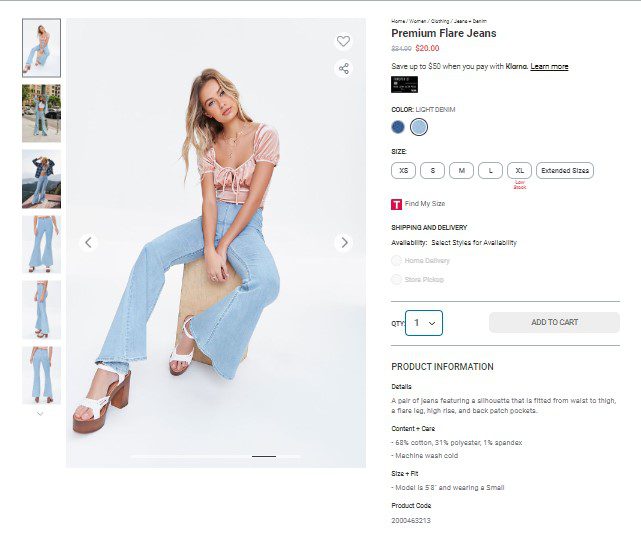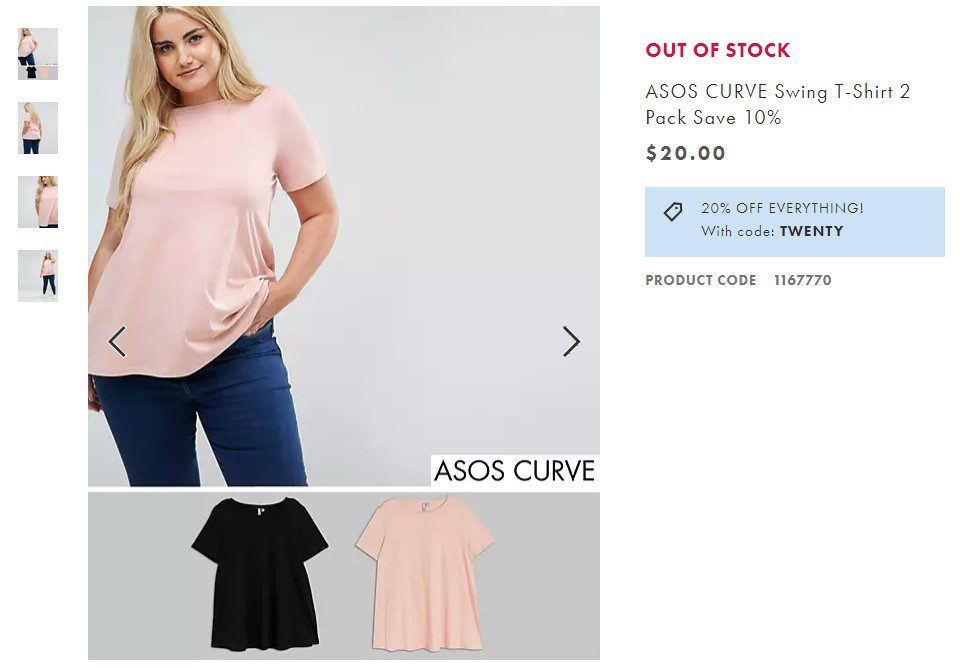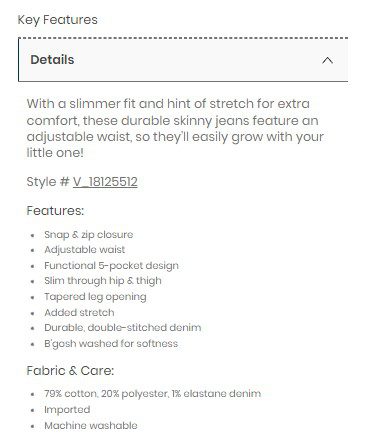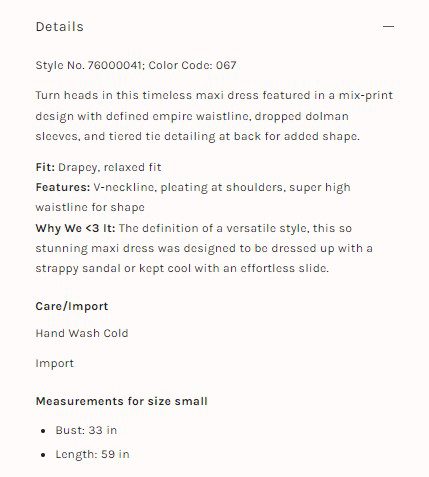It’s hard to overstate the importance of a well-written product description, especially in the fashion apparel where they are so needed.
And yet, most product descriptions are swept under the rug.
Most product descriptions are dull or poorly written —overlooked as brands fixate on other parts of their product pages, like product photos and reviews. (Not to say they’re not just as important!)
The true fact of it is that product descriptions are KEY to ranking well on Google, improving conversion rate and are just as important as your product visuals. New research has found that 87% of shoppers value accurate, complete product content and descriptions when making a purchase.
It’s about time we give product descriptions the attention it deserves and we’re here to tell you how.
In this blog, we’re giving you our top 9 expert tips (plus one bonus tip!) for writing effective copy guaranteed to convert.
What are Product Descriptions?
A product description is a blurb that provides essential detail about your product and explains the benefits of purchasing it.
Within an online store, the product description is typically located close to the product photo(s).
Each webpage will have its own positioning and length of product descriptions.
Take Forever 21 for example, who place their product description right beside images and keep the copy short and sweet.

Now that we’ve gotten an understanding of product descriptions, sit back, grab a coffee (or tea) and read our top expert tips for writing effective copy that converts.
1. Understand your audience
2. Be specific about your product’s benefits
3. Use strong, precise language
4. Write descriptions that match your images
5.Tell a story to capture your audience’s attention
6. Showcase your brand’s personality
7. Use social proof to establish trust
8.Position your product descriptions effectively
9.Measure your performance and optimize based on KPIs
No matter how clever of a writer you are, you can’t reach your audience if you don’t understand what they want. Make it your mission to understand your target buyer before writing a single piece of copy.
As a first step, create buyer personas. Uncover your target buyer’s demographics, motivations, daily habits, and other key characteristics. Your item can attract multiple buyer types—but the more specific you can get, the easier time you’ll have with appealing to your buyers’ emotions.
ASOS Curve does a great job at relating to their buyers. Understanding that their target market are plus sized individuals, they ensure their copy speaks to the struggles of the community.
Take the main copy of their signature Swing T-Shirt for example ;
Say goodbye to awkward-fitting plus-size fashion with our ASOS CURVE collection. Giving shout-outs to denim, occasionwear and jumpsuits, our London-based design team nail your new-season fashion goals with new shapes and fits for (UK) sizes 18-30. Work longline tunics and simple shift dresses Monday to Friday, or prep for the party in maxi lengths.

There’s some wisdom in the statement “Features Tell, But Benefits Sell”
The job of your product description isn’t simply to list out your features, but to help your buyers realize why they need your product in their lives. What do they gain from using it? Why do they need it now, not later?
When defining your product’s benefits, it helps to ask questions like:
For example, childrens fashion brand Oshkosh B’Gosh showcasing their newest line of jeans.

Understanding the needs of parents, they highlight that their jeans contain an adjustable waist that can easily stretch as their children grow.
Take bohemian fashion brand Free People. Along with high definition product visuals , they make sure to paint a picture for their consumers by giving ideas on how to style up the product.

As you seek to write appealing copy, be on guard against generic or fluffy language. Avoid using superlatives like “excellent” or “great” as crutches.
Instead, use strong and precise language that demonstrates why your product is so great. Use fresh, uncomplicated copy that’s also on-brand.
For example, rather than describing your jewelry as “fashionable, top-quality earrings,” try saying something like “whimsical drop earrings made from solid gold.”
Make sure to avoid being overly biased in your copy. Brand trust is everything!
Your product descriptions should pair nicely with product images in order to paint a vivid mental picture for your customers. As a matter of fact, your images could serve as good inspiration.
For example, your image shows a woman at the beach wearing a dress paired with sandals, you could take this visualization further by mentioning that by swapping her sandals with heels, the dress is perfect for a more upscale event.
A good product description communicates essential information about an item without being overly salesy.
Storytelling is the best way to make your customers forget that they’re being sold to, while persuading them to take action.
Taking this approach will help you to generate descriptions that are more active and engaging.
Pioneering perfume brand Diptyque has got storytelling down to a T. Their product descriptions transform buyers into a different reality, slyly convincing them that they need the product to achieve this fantasy.
Here’s an example:

A powerful brand isn’t built in a day. But in order to successfully build a brand, you need consistency.
As part of your strategy for branding your online store, make sure that your product descriptions capture your brand’s unique voice.
Nike is one of the best examples of a strong and consistent brand personality. Their product descriptions are kept exciting, cool, and innovative.

At a time when 94% of surveyed consumers say that customer reviews are crucial to their decision-making (even above price, according to PowerReviews), social proof is invaluable.
Consider weaving social proof into your product descriptions in these ways:
We would be silly to give you all these pointers and not practice them ourselves. On our Studio Drop website we have several testimonials from our clients.

Urban outfitters for example, allows buyers to review the product right below the product image. It gives a real life description of the product, moving the potential buyer along the sales funnel process. It can give the target buyer a chance to see the quality of materials and if it is true to sizing. Some clothing can run large or small and this will eliminate any returns / negative comments on orders.

As much as we’d like to believe that buyers read every single line of copy we write, the reality is that most are skimming it.
With the rise of mobile commerce, it’s especially important to provide content in a digestible format.
Think: bullet points. Proper headings. Bolding and italicizing (albeit these should be used sparingly). Quick, easy-to-read statements
As you’re flexing your creative muscles, make sure that you’re writing with specific goals in mind. Establish key performance indicators (KPIs) and a system for measuring the impact of your copywriting.
Product descriptions can help to influence a number of KPIs, including :
Big Bonus Tip : Create a Smooth Buying Experience from Start to Finish
Your product description is prime real estate for expressing the undeniable benefits of your item.
Fight the temptation to rush through them, or to set them aside for a later time.
Sit down, note your strategies and yield the results your business deserves.
Looking to create high-converting product visuals to go with your description? We’re here to help.
Can you really afford not to include these into your brand? We think not.
Now, we would like to hear your thoughts!
Have you ever used shoppable product videos for your business? Are you interested in using this super slick, impactful feature?
Lucky for you – we have the best e-Commerce video (and photo) solution – STUDIODROP!